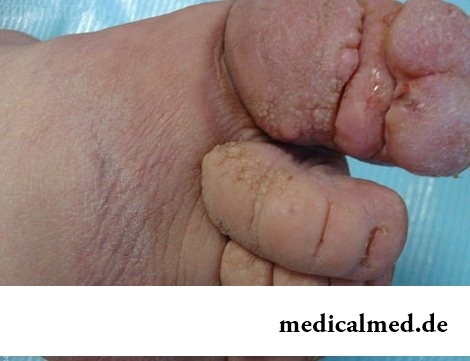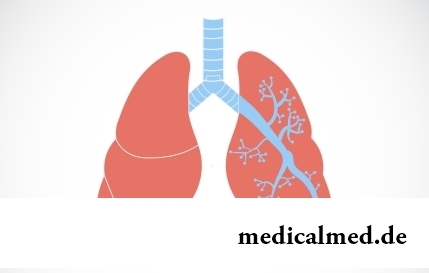





Lymphostasis

The lymphostasis (a limfedema, lymphatic hypostasis) – an inborn or acquired disease, persistent hypostasis which is followed by consolidation of skin, a noticeable thickening of extremities leads further to formation of ulcers and development of elephantiasis. The lymphostasis arises owing to disturbance of balance between lymphization and its outflow from capillaries and peripheral absorbent vessels in tissues of extremities and bodies, to the main lymphatic collectors and a chest channel.
The progressing lymphostasis destroys lymphatic system, causing constant psychological injuries in the patient, and results physical sufferings in disability.
According to WHO data, most often young women (about 10% of all population of Earth) and elderly people get sick with a lymphostasis.
Lymphostasis reasons
Depending on origins, the lymphostasis shares on primary and secondary. Congenital anomaly of absorbent vessels is considered the reason of primary lymphostasis. Sometimes the disease can be revealed right after the birth, but, most often, the disease is shown and found in the first half of life, during puberty.
The phenomena of the following order can be the cause of a secondary lymphostasis:
- Emergence of benign and malignant tumors of lymphatic system
- Various injuries (mechanical damages, burns, radiation exposure, etc.) damaging absorbent vessels and lymph nodes
- Slow-moving way of life of the patient (generally at bed patients)
- The chronic diseases resulting in venous insufficiency and a lymphostasis of extremities, which are complicated by a posttromboflebitichesky disease, most often at elderly people
- Staphylococcal and parasitic infections
Also, the reasons of a secondary lymphostasis can become:
- Erysipelatous inflammation of the lower extremities
- Obesity
- Klippel-Trenone's syndrome A chest
- cavity operations concerning oncology
Stages and symptoms of a lymphostasis
Distinguish 3 stages of development of a lymphostasis:
- At the 1st stage the slight reversible hypostasis developing by the evening and vanishing in the mornings after a dream is observed. Over time hypostases become systematic and though patients at this stage seldom see a doctor, the appearing concern forces them to apply folk remedies and to self-medicate (to bandage the swelling extremities, to draw an iodic grid, to put compresses). At this stage connective tissue growths did not begin yet and at the timely address to the doctor and adequate treatment, the disease recedes.
- At the 2nd stage symptoms of a lymphostasis increase and characterized by already irreversible hypostasis, there is a growth of connecting fabrics and hardening of skin. Stiffness of an integument can cause pain at the patient. When pressing fabrics during the long period there is a pole. At this stage patients, most often see a doctor. Despite complexity of treatment if the patient makes necessary efforts and implements recommendations of the doctor, recovery is possible.
- Symptoms of a lymphostasis increase by 3 stages and the disease accepts irreversible character. There are fibroses, cysts, the expressed lymphostasis of extremities is shown, their contour is lost, functions are broken, there comes the stage of elephantiasis and restriction of mobility. In the absence of treatment there are trophic ulcers, an erysipelatous inflammation, eczema.
Problems are more and more aggravated, and can lead to many heavy complications, up to sepsis and a lethal outcome.
Diagnosis of a lymphostasis
- Diagnosis of a lymphostasis consists in carrying out the following inspections:
- clinical and biochemical analysis of blood and urine
- consultation of the vascular surgeon with inspection of bodies of a chest cavity and ultrasonography of abdominal organs, small pelvis and veins of the lower extremities (at a lymphostasis of extremities)
- limfografiya of absorbent vessels for specification of their passability
If necessary, for diagnosis of a lymphostasis, consultations of other specialists are appointed.
Treatment of a lymphostasis
Irrespective of a stage of a disease and symptoms of a lymphostasis, all patients are subject to dispensary observation of an angiokhirurg. The purpose of the carried-out treatment consists in normalization of outflow of a lymph from the lower extremities and other bodies. 
Treatment of a lymphostasis - long and difficult process. Hardware techniques (a pneumomassage, magnetotherapy, laser therapy) in combination with complex conservative methods (a manual lymphatic drainage, imposing of a compression bandage) are applied.
From medicines venotonik of polyvalent action with lymphotropic effect, for improvement of peripheric circulation – vasoprotectives, prostaglandins, the antibioticotherapia immunostimulating, the diuretic and desensibilizing therapy are appointed.
The great value at treatment of a lymphostasis is attached to observance of a subcaloric diet with restriction of table salt, physiotherapy exercises and the general activation: occupations run, swimming, etc. The patient's spirit, his commitment to recovery, implementation of medical recommendations is also important.
Treatment of a lymphostasis folk remedies
Treatment of a lymphostasis folk remedies consists in clarification of an organism by means of enemas by different techniques, the use of apple cider vinegar, juice of a dandelion, plantain, mix of red grape wine and fresh red beet juice, water tincture of horse-radish or bark of an aspen. Are used at treatment of a lymphostasis by folk remedies also broths of a marjoram, a ninety-knot, branches of a fir, leaves and flowers of a fireweed.
According to researches, the women drinking several glasses of beer or wine in a week have the increased risk to develop breast cancer.

History of mankind contains several tens of epidemics whose emergence was compared by eyewitnesses and historians to doomsday. With...
Section: Articles about health
Venereal diseases in medicine are called the infections which are transmitted preferential sexually, now they and are called - infections, sexually transmitted, or STD. Among them is also life-threatening. In spite of the fact that majority...
Section: Articles about health
The metabolism at each person proceeds in own way. However between the speed of this process and disposal of excess weight after all all have a dependence. Unfortunately, the people inclined to try on itself numerous "miracle" diets, not always consider this circumstance and with the most resolute intentions begin to eat so that artificially slow down the metabolism instead of to accelerate it. Except quite clear disappointment, incorrectly picked up systems...
Section: Articles about health
Producers of milk mixes for children assure: mixes are ideally balanced and adapted for needs of babies. In a sluch...
Section: Articles about health
Phobia – the persuasive fear of a certain contents shown in a specific situation against the will of the person. Concepts of a phobia and fear are similar, however if the fear is natural protective function of mentality, then the phobia is its deviation. So the person can an ispytyva...
Section: Articles about health
Partial and the more so full loss of hearing significantly reduces quality of life. Difficulties with communication lead to loneliness and isolation. The person who badly hears experiences difficulties with social and professional implementation, quite often has problems in private life....
Section: Articles about health
The next flu epidemic leads to the next panic, from year to year we give in on these manipulations: professionally alarming goal...
Section: Articles about health
Musicotherapy – a treatment method which caused and causes a set of a controversy concerning its efficiency. However the facts are relentless: during the numerous researches curative impact of music on an organism was scientifically confirmed. Since then in a number of the countries a method...
Section: Articles about health
About 10-15 years ago existence of the computer in the apartment of the Russian was considered as a rarity and office rooms were only at the first stage of equipment by these useful devices. Today practically in each house there is a computer (and often not one), and a regular user is already every our second compatriot. Convenience and efficiency of personal computers are undoubted, but the people working with them daily have to know also about health hazard which they can predstavlit...
Section: Articles about health
Turnip, radish, horse-radish – once these and other products enjoyed wide popularity at our ancestors, being not only food, N...
Section: Articles about health
Bathing in broths of medical flowers and plants (phytobathtub) was eurysynusic since Cleopatra who is a good judge in all that concerns beauty and health. And today phytobathtubs is the simple and available means allowing not only to remove nervous N...
Section: Articles about health
Small appetite at the child – the complaint which pediatricians should hear practically from each mother. Most often it is carried to the category of children's whims, however the refusal of food in certain cases can be to alarming symptoms therefore it cannot be ignored....
Section: Articles about health
Deciding to get rid of an addiction, not all imagine what effects it is necessary to face. Process of refusal from ку...
Section: Articles about health
Several decades ago the basil (the district khan, реан, Reagan) was considered as a part of the Caucasian or east cuisine, but today it strongly took the place on tables of Russians. Greens of this plant possess a strong, pleasant smell and specific fresh taste, because of to...
Section: Articles about health
Maternal milk is the best food for the newborn. It is the unique natural product containing an optimum set of nutrients, and which is best adapted in order that the baby normally developed and it was protected from harmful factors of external environment, unusual for it. Unfortunately, breastfeeding process not always does without complications. Sometimes, that the kid begins to bite a breast, giving to mother an essential inconvenience. Some women...
Section: Articles about health
Physical activity is necessary for normal functioning of a human body. At a lack of the movement cease функц...
Section: Articles about health
The fatigue, sleep debt, disturbances of food, bad mood, vagaries of the weather – all these circumstances badly affect our appearance. Especially the person suffers: skin becomes flabby, loses healthy color, becomes covered by wrinkles, zones of hypostases and t appear...
Section: Articles about health
For the help to doctors in the choice of optimal solutions for treatment of various diseases the Cochrane scientific organization (Cochrane) conducts joint researches with representatives of scientific community around the world. The analysis of a series of the conducted researches of the drug Oscillococcinum® relating to group of cold remedies became one of the last methanolyses....
Section: Articles about health
What woman does not dream of a beautiful and thick hair? So far physicians developed difficult schemes on hair transplant, in the bet industry...
Section: Articles about health
Dogrose – one of the most widespread adornment and medicinal plants growing practically in all territory of our country. To most of Russians it is a beautiful bush it is known, first of all, as a source of fruits, extremely vitamin-rich....
Section: Articles about health
Doctors claim that the people not so familiar with a dorsodynia occur among adult Russians very seldom. At the same time the vast majority of the patients who are periodically testing this indisposition do not hurry to ask for medical care at all. On the one hand, there is an opinion that feelings of this sort at mature age are nearly natural phenomenon which is not doing serious harm to health. With another – practice of self-treatment various obezbol is eurysynusic...
Section: Articles about health
Striya (extension) are the defects of skin having an appearance of direct or wavy strips from 1 to 10 cm long and 1-5 mm wide. In the majority with...
Section: Articles about health
They say that to ensure health and longevity of people it is obliged. Really, at competent approach to these questions, minimization of an adverse effect of many factors does not represent a special problem. Practically everyone has an opportunity to play sports...
Section: Articles about health
Each person supports all life a SARS about 200 times. The peak of incidence falls on cold season, but it is possible to get sick with a temperature and a pharyngalgia, and sometimes and very possibly, even during a heat. The reasons for development of catarrhal diseases there is a set: from the weakened immunity till an excess portion of ice cream....
Section: Articles about health
Memory is an ability of the central nervous system to fix, keep and as necessary to reproduce information on knowledge...
Section: Articles about health
Osteoporosis this general disease which main sign is decrease in density of a bone tissue. On distribution width it takes the fourth place among noninfectious diseases. The illness develops at mature age more often: in our country to them harvest seasons...
Section: Articles about health
Hemorrhoids – extremely widespread disease. Periodically arising inflammations and bleeding of hemorrhoidal nodes cause serious discomfort to nearly fifteen percent of adults. Meanwhile, having a clear idea of the reasons of an exacerbation of an illness and following rules of precaution, it is possible to reduce substantially sharpness of unpleasant feelings and to reduce progressing of a disease....
Section: Articles about health
